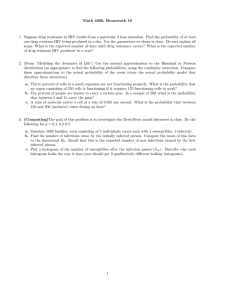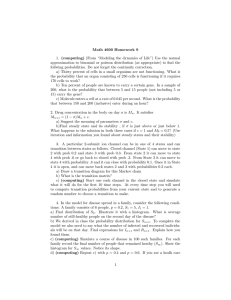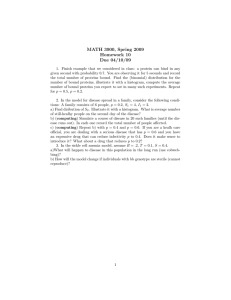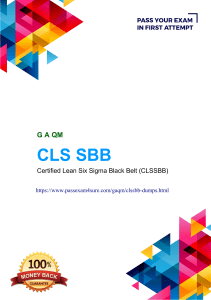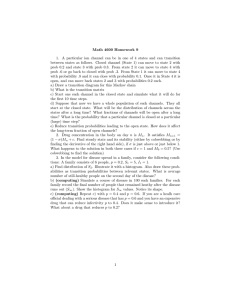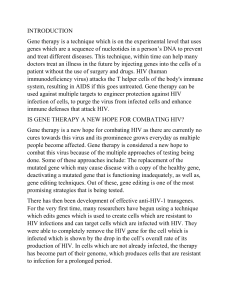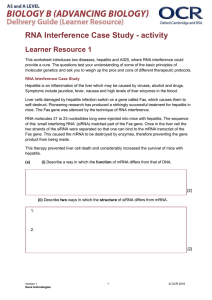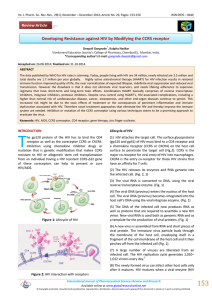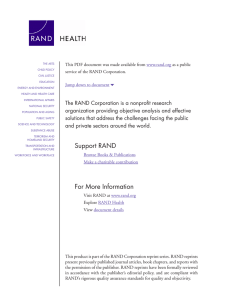Math 4600 Homework 9
advertisement
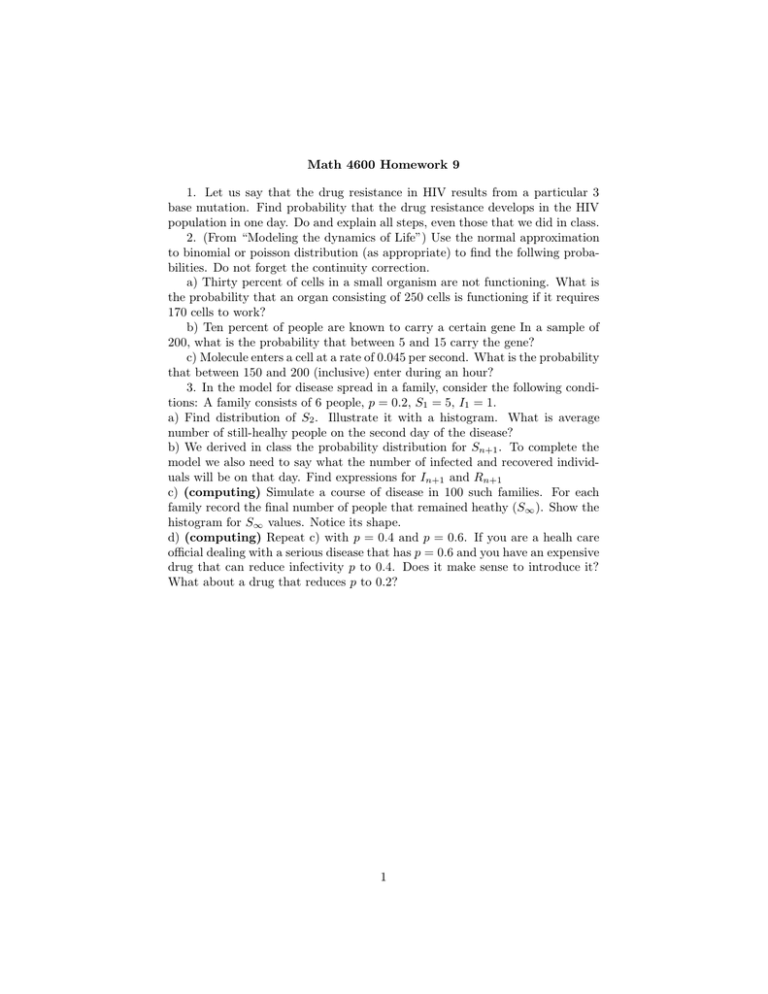
Math 4600 Homework 9 1. Let us say that the drug resistance in HIV results from a particular 3 base mutation. Find probability that the drug resistance develops in the HIV population in one day. Do and explain all steps, even those that we did in class. 2. (From “Modeling the dynamics of Life”) Use the normal approximation to binomial or poisson distribution (as appropriate) to find the follwing probabilities. Do not forget the continuity correction. a) Thirty percent of cells in a small organism are not functioning. What is the probability that an organ consisting of 250 cells is functioning if it requires 170 cells to work? b) Ten percent of people are known to carry a certain gene In a sample of 200, what is the probability that between 5 and 15 carry the gene? c) Molecule enters a cell at a rate of 0.045 per second. What is the probability that between 150 and 200 (inclusive) enter during an hour? 3. In the model for disease spread in a family, consider the following conditions: A family consists of 6 people, p = 0.2, S1 = 5, I1 = 1. a) Find distribution of S2 . Illustrate it with a histogram. What is average number of still-healhy people on the second day of the disease? b) We derived in class the probability distribution for Sn+1 . To complete the model we also need to say what the number of infected and recovered individuals will be on that day. Find expressions for In+1 and Rn+1 c) (computing) Simulate a course of disease in 100 such families. For each family record the final number of people that remained heathy (S∞ ). Show the histogram for S∞ values. Notice its shape. d) (computing) Repeat c) with p = 0.4 and p = 0.6. If you are a healh care official dealing with a serious disease that has p = 0.6 and you have an expensive drug that can reduce infectivity p to 0.4. Does it make sense to introduce it? What about a drug that reduces p to 0.2? 1
